Everyone’s body type, makeup, and how they bowl are unique to themselves.
The oil pattern you are playing sometimes requires you to throw the bowling ball with straighter angles, and other oil patterns require your angles to be open.
A good slide and balanced finish position maximizes leverage and enables you to impart more revolutions on the bowling ball.
Start by getting in your stance and taking a mental note of the board you are standing on.
After you push the bowling ball away, your body has to get out of the way of the bowling ball as you begin your swing; otherwise, it will hit your leg.
Crossing over your slide foot at the beginning of the approach will enable you to get the ball into a straight swing path.
Next, keep your arm swing straight throughout the approach from the top of the swing to the bottom.
When you slide towards the foul line, make sure you are sliding in front of your push-off step. This is where a lot of bowlers run into problems.
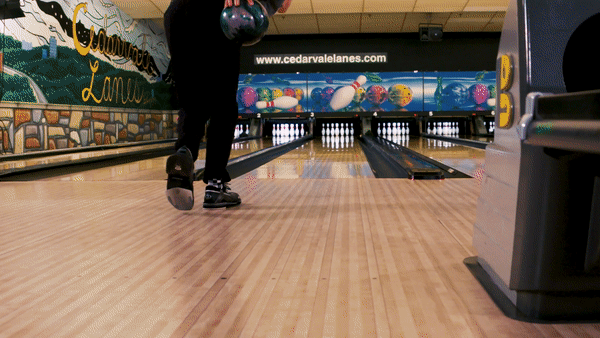
As you post your shot, look down and record which board you slid on. Likely, it is not the same board you started on when you were in your stance; this is drifting.
It’s alright for these two numbers to be different as long as they are consistently (the same number of boards “drifted”) different.
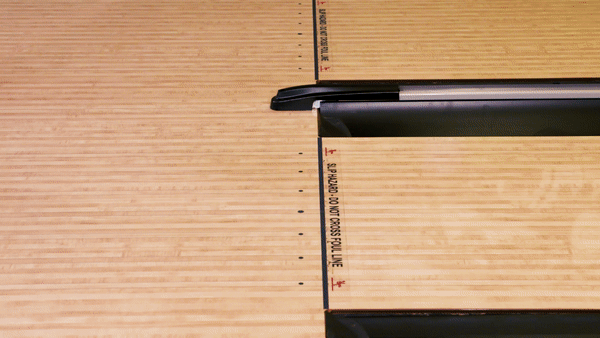
Errant Shots
Have you ever hit your target down lane expecting a strike, and you couldn’t have been more wrong?
If you are sliding away from your push-off step or if you slide across your push-off step you will lose leverage and likely fall off balance.
You can still hit your target, but without the proper leverage in the finish position, the bowling ball will not get into all three phases of ball motion, and your chances of striking will decrease.
Below is an example where Erik hit his target at the arrows didn’t strike because he “drifted” outside his normal drift. The blue line represents where he should have slid.
(Compare this video with the video directly above)
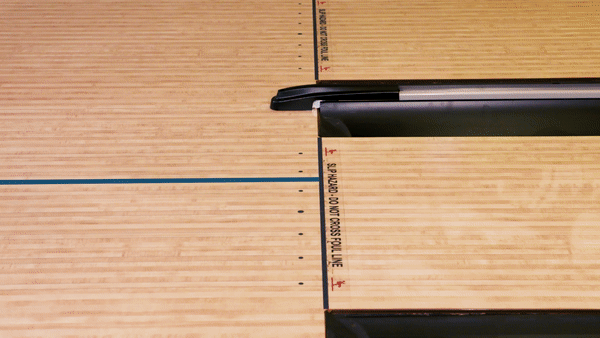
So here are the key takeaways regarding drift:
- • Know your drift.
- • The crossover step allows you to get out of the way of the bowling ball.
- • Slide in front of your push-off step.
- • Post your shot.
- • Always look down to see where your slide foot ended up.
Keep Track of Your Slide Board
Lane conditions are always changing. Staying ahead of those changes is what separates good bowlers from great bowlers.
Understanding body positions, launch angles, targeting, axis rotation, ball speed, and ball selection is always top of mind when you’re stringing strikes together or struggling to find the pocket.
When right-handed bowlers set up in the middle part of the lane, they tend to walk straight.
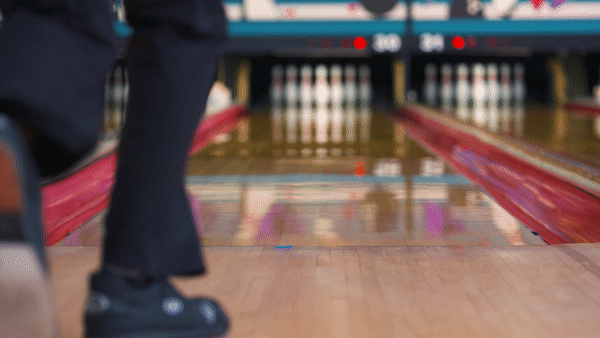
The further right you (right-handed bowlers) start on the approach, the tendency is to slide left at the foul line from the board you stated on in your stance.
The further left you (right-handed bowlers) start on the approach, the tendency is to slide right at the foul line from the board you stated on in your stance.
Drifting a board or two left or right is not a big deal as long as you drift the same every time, regardless of where you are playing.
Another reason for knowing what board you are supposed to slide on is key.
Cause and Effect
When you identify where you are supposed to slide, you can now work backward and eliminate physical game problems.
Getting your footwork aligned in time with your arm swing helps to achieve your desired launch angle.
Do you know what you do if you hit your target and the ball motion is lackluster?
Check your slide foot location before you even think about what to adjust, just to confirm if it was something you may have done before making an adjustment.
Trail Leg: Heel and Toe
In order to achieve balance at the foul line, your trail leg needs to be in a good position.
If it’s out of position, your hips will stay open, and you could potentially fall off the shot, resulting in missing your target down lane.
After the ball starts in your approach, it passes your hip. At this point, your hips are open.
As you exit your pivot or power step, the position of the trail leg foot will determine how your lower body will respond.
If your heel faces the wall or it is perpendicular to the approach, your hips will remain open, and you will lose balance, leverage, and stability in the finish position.
This will negatively impact your release and ball motion.

The lower body is engaged, and your hips are closed in the finish position when your toes and heel are parallel to the approach.
The toes will face the pins, the heel faces the wall, and both are as close as possible to being parallel to the floor.
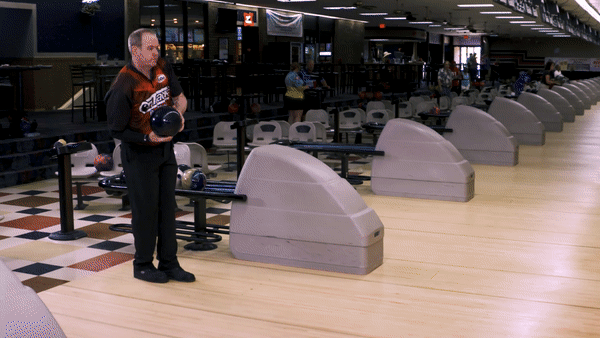
Separation of the Trail Leg
Overall, if the trail leg is separated from the rest of your body, your hips will be open in the finish position.

The goal is to close the hips constantly to achieve balance and leverage so that you can watch your ball hit the target.
Your fingers at the point of release will be under the ball, and the ball will be closer to your leg during the release, maximizing leverage.
Observe your bowling ball’s motion down the lane and through the pins before looking down at your slide board location. You just might find out one has something to do with the other.

Hi there: You have been doing a great job in the last 2-3 years and I want to tell you that we really appreciate that. However, this article is one of your best...Keep up the good work and thank you and congratulations...!!!
Good Stuff…! Information Got too Read it again